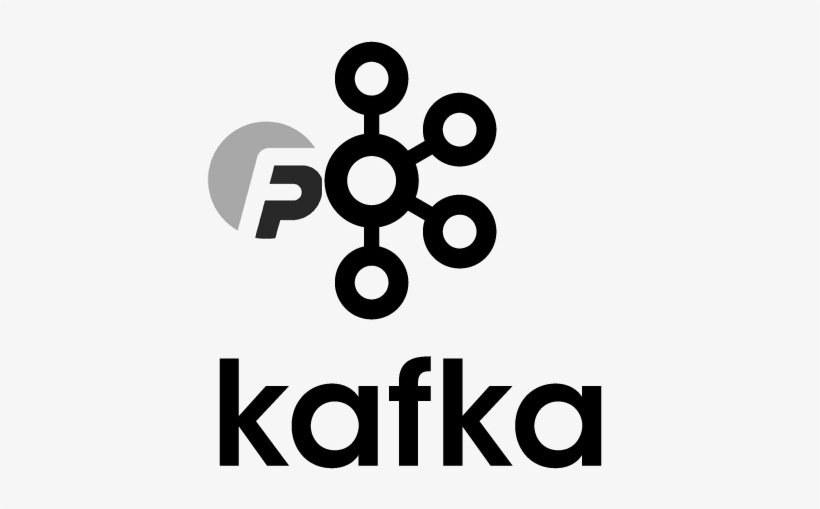Introduction
In today’s digital era, real-time data processing has become a necessity. Apache Kafka, a highly scalable, distributed, and fault-tolerant real-time event streaming platform, has emerged as a key player in this space. It’s designed to handle trillions of events in a day and provides a solution to multiple real-time data streaming challenges.
Whether you’re a novice starting your journey or an experienced programmer wanting to refresh your knowledge, this blog post will introduce you to Apache Kafka, its architecture, core concepts, and illustrate how to perform basic operations using Kafka’s API.
Part 1: What is Apache Kafka?
Apache Kafka is an open-source distributed event streaming platform used by thousands of companies for high-performance data pipelines, streaming analytics, data integration, and mission-critical applications.
1. Downloading and Setting Up Kafka
Firstly, you’ll need to download and setup Kafka. You can download Kafka from the Apache website and unzip it:
tar -xzf kafka_2.13-2.7.0.tgz
cd kafka_2.13-2.7.02. Starting Kafka Environment
Kafka uses ZooKeeper, so before starting Kafka, let’s start a ZooKeeper server:
bin/zookeeper-server-start.sh config/zookeeper.propertiesNow, we can start the Kafka server:
bin/kafka-server-start.sh config/server.properties3. Creating a Topic
Now that Kafka is up and running, let’s create a topic named “test” with a single partition and only one replica:
bin/kafka-topics.sh --create --bootstrap-server localhost:9092 --replication-factor 1 --partitions 1 --topic testPart 2: Kafka Core Concepts
Kafka revolves around the concepts of topics, partitions, producers, consumers, and brokers.
4. Producers and Consumers
Producers create new messages. In Kafka, the command-line to send a few messages looks like this:
bin/kafka-console-producer.sh --broker-list localhost:9092 --topic testAfter executing the above command, type a few messages into the console to send to the server.
Consumers read messages. The command-line Kafka consumer will read the messages you just sent:
bin/kafka-console-consumer.sh --bootstrap-server localhost:9092 --topic test --from-beginning5. Kafka Topics and Partitions
Topics are feeds of messages in categories that Kafka maintains. We’ve already created a “test” topic in step 3.
Partitioning allows you to split data of a Kafka topic across multiple brokers — allowing you to increase your data redundancy and throughput. You can specify the number of partitions you want for a particular topic. For example, to create a topic partitioned_topic with 5 partitions:
bin/kafka-topics.sh --create --bootstrap-server localhost:9092 --replication-factor 1 --partitions 5 --topic partitioned_topic6. Kafka Brokers and Clusters
A Kafka broker is a stateless service that receives messages from producers (writers) and forwards them to consumers (readers). A Kafka cluster is a set of Kafka brokers forming a distributed system.
To start multiple brokers, we need to make a unique server.properties file for each broker. For instance, to start a second broker:
cp config/server.properties config/server-2.propertiesThen, we edit this new file config/server-2.properties, change the following:
broker.id=2
listeners=PLAINTEXT://:9093
log.dirs=/tmp/kafka-logs-2Finally, we can start the second broker:
bin/kafka-server-start.sh config/server-2.propertiesPart 3: Kafka APIs
Apache Kafka has four core APIs: Producer API, Consumer API, Streams API, and Connect API.
7. Using Kafka Producer API
Kafka Producer API allows an application to send a stream of records to one or more Kafka topics.
In Java, you can create a new producer by creating an instance of KafkaProducer, and send data by invoking the send() method. Here’s a simple example:
Properties props = new Properties();
props.put("bootstrap.servers", "localhost:9092");
props.put("key.serializer", "org.apache.kafka.common.serialization.StringSerializer");
props.put("value.serializer", "org.apache.kafka.common.serialization.StringSerializer");
Producer<String, String> producer = new KafkaProducer<>(props);
for(int i = 0; i < 100; i++)
producer.send(new ProducerRecord<String, String>("my-topic", Integer.toString(i), Integer.toString(i)));
producer.close();8. Using Kafka Consumer API
Kafka Consumer API allows an application to read a stream of records from one or more Kafka topics.
In Java, you can create a new consumer by creating an instance of KafkaConsumer, and receive data by invoking the poll() method.
Here’s a simple example:
Properties props = new Properties();
props.put("bootstrap.servers", "localhost:9092");
props.put("group.id", "test");
props.put("enable.auto.commit", "true");
props.put("auto.commit.interval.ms", "1000");
props.put("key.deserializer", "org.apache.kafka.common.serialization.StringDeserializer");
props.put("value.deserializer", "org.apache.kafka.common.serialization.StringDeserializer");
KafkaConsumer<String, String> consumer = new KafkaConsumer<>(props);
consumer.subscribe(Arrays.asList("my-topic"));
while (true) {
ConsumerRecords<String, String> records = consumer.poll(100);
for (ConsumerRecord<String, String> record : records)
System.out.printf("offset = %d, key = %s, value = %s%n", record.offset(), record.key(), record.value());
}9. Using Kafka Streams API
Kafka Streams API allows an application to act as a stream processor, consuming an input stream from one or more topics and producing an output stream to one or more output topics.
A simple example of a Kafka Streams application:
Properties props = new Properties();
props.put(StreamsConfig.APPLICATION_ID_CONFIG, "wordcount");
props.put(StreamsConfig.BOOTSTRAP_SERVERS_CONFIG, "localhost:9092");
props.put(StreamsConfig.DEFAULT_KEY_SERDE_CLASS_CONFIG, Serdes.String().getClass());
props.put(StreamsConfig.DEFAULT_VALUE_SERDE_CLASS_CONFIG, Serdes.String().getClass());
StreamsBuilder builder = new StreamsBuilder();
KStream<String, String> textLines = builder.stream("TextLinesTopic");
KTable<String, Long> wordCounts = textLines
.flatMapValues(textLine -> Arrays.asList(textLine.toLowerCase().split("\\W+")))
.groupBy((key, word) -> word)
.count();
wordCounts.toStream().to("WordsWithCountsTopic", Produced.with(Serdes.String(), Serdes.Long()));
KafkaStreams streams = new KafkaStreams(builder.build(), props);
streams.start();10. Using Kafka Connect API
Kafka Connect API allows building and running reusable producers or consumers that connect Kafka topics to existing applications or data systems.
For instance, a simple stand-alone configuration for a file source connector looks like:
{
"name": "local-file-source",
"config": {
"connector.class": "org.apache.kafka.connect.file.FileStreamSourceConnector",
"tasks.max": "1",
"file": "/path/to/file.txt",
"topic": "connect-test",
"key.converter": "org.apache.kafka.connect.storage.StringConverter",
"value.converter": "org.apache.kafka.connect.storage.StringConverter",
"key.converter.schemas.enable": "false",
"value.converter.schemas.enable": "false"
}
}And a simple stand-alone configuration for a file sink connector:
{
"name": "local-file-sink",
"config": {
"connector.class": "org.apache.kafka.connect.file.FileStreamSinkConnector",
"tasks.max": "1",
"file": "/path/to/file.txt",
"topics": "connect-test",
"key.converter": "org.apache.kafka.connect.storage.StringConverter",
"value.converter": "org.apache.kafka.connect.storage.StringConverter",
"key.converter.schemas.enable": "false",
"value.converter.schemas.enable": "false"
}
}Conclusion
Apache Kafka is a powerful distributed event streaming platform capable of handling trillions of events a day. It’s not only a buzzword in the Big Data world but an essential component of the modern data architecture.
We have gone through a quick introduction to Apache Kafka, its core concepts, architecture, and Kafka’s four core APIs. We hope that the examples given in each section have illustrated how Kafka works and provided a solid foundation for your future exploration of Kafka.
Remember, mastering Kafka is not a one-day journey; it’s about continuous learning and practice. As Kafka continues to evolve, so does its capabilities and possibilities. Keep exploring and experimenting, and you’ll find Kafka’s power in managing real-time data streams.












